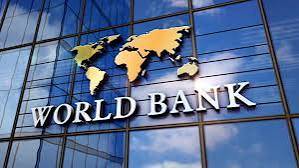The World Bank Group, established in 1944, is an international financial institution that plays a pivotal role in addressing global poverty, promoting sustainable development, and supporting economic growth in developing countries. This comprehensive article explores the history, structure, functions, initiatives, challenges, and impact of the World Bank, highlighting its efforts to alleviate poverty and foster prosperity worldwide.
Introduction to the World Bank
1. Foundation and Purpose:
The World Bank was founded at the Bretton Woods Conference in 1944, alongside the International Monetary Fund (IMF), to facilitate post-war reconstruction and promote economic stability. Initially focused on Europe’s recovery, its mission expanded to include global development.
2. Structure and Governance:
The World Bank Group consists of five institutions:
• International Bank for Reconstruction and Development (IBRD): Provides loans and development assistance to middle-income and creditworthy low-income countries.
• International Development Association (IDA): Offers concessional loans and grants to the world’s poorest countries.
• International Finance Corporation (IFC): Supports private sector development by investing in businesses and projects.
• Multilateral Investment Guarantee Agency (MIGA): Provides political risk insurance and credit enhancement to attract private investment.
• International Centre for Settlement of Investment Disputes (ICSID): Facilitates arbitration and conciliation of investment disputes between governments and foreign investors.
Objectives and Focus Areas
1. Poverty Alleviation: The primary goal of the World Bank is to reduce poverty and improve living standards in developing countries through sustainable development projects and initiatives.
2. Infrastructure Development: The World Bank funds projects in sectors such as transportation, energy, water supply, sanitation, and telecommunications to enhance infrastructure and support economic growth.
3. Education and Healthcare: Investing in human capital through education, healthcare, and social services is critical to fostering inclusive development and reducing inequality.
4. Environmental Sustainability: Promoting environmental sustainability and climate resilience is integral to the World Bank’s agenda, addressing issues like climate change, biodiversity conservation, and natural resource management.
Funding and Financial Instruments
1. Capital Structure: The World Bank raises funds through contributions from member countries, bond issuance in international capital markets, and income generated from loan repayments and investments.
2. Financial Instruments:
• Loans and Credits: The IBRD and IDA provide loans and credits to governments and private sector entities for development projects and policy reforms.
• Grants: IDA offers grants to the poorest countries to finance projects with high developmental impact.
• Equity Investments: The IFC makes equity investments in private sector companies to stimulate entrepreneurship and economic growth.
• Insurance and Guarantees: MIGA provides political risk insurance and guarantees to encourage foreign investment in developing countries.
Initiatives and Programs
1. IDA: The International Development Association focuses on the poorest countries, offering financial support and technical assistance for projects in agriculture, health, education, infrastructure, and governance.
2. Climate Change Action: The World Bank supports countries in mitigating and adapting to climate change through investments in renewable energy, sustainable agriculture, climate-smart infrastructure, and resilience-building initiatives.
3. Pandemic Response: In response to global health crises like the COVID-19 pandemic, the World Bank launched emergency financing mechanisms and provided support for healthcare systems, social protection, and economic recovery.
Impact and Evaluation
1. Development Outcomes: The World Bank’s projects have contributed to improvements in infrastructure, healthcare, education, and economic growth in developing countries, lifting millions out of poverty and enhancing livelihoods.
2. Monitoring and Evaluation: The World Bank evaluates project effectiveness, impact on beneficiaries, sustainability of outcomes, and adherence to environmental and social safeguards through rigorous monitoring and evaluation frameworks.
Challenges and Criticisms
1. Criticism of Conditionality: Some critics argue that World Bank loans and assistance come with stringent conditions, influencing economic policies and governance in recipient countries.
2. Debt Sustainability: Concerns about debt sustainability arise when countries accumulate significant external debt from World Bank loans, potentially leading to financial dependency and repayment challenges.
3. Environmental and Social Impacts: World Bank-funded projects have faced criticism for their environmental impact, displacement of communities, and inadequate consultation with affected populations.
Governance and Accountability
1. Governance Structure: The World Bank is governed by its member countries through a Board of Governors and a Board of Executive Directors, representing regional constituencies and overseeing strategic decision-making.
2. Transparency and Accountability: The World Bank promotes transparency in its operations, publishes project documents and financial reports, and engages stakeholders in consultations to ensure accountability and good governance.
Future Directions and Adaptation
1. Digital Transformation: Embracing digital technologies and innovation to enhance service delivery, financial inclusion, and data-driven decision-making in development projects.
2. Green and Inclusive Recovery: Prioritizing green recovery and inclusive growth strategies to build resilience against future shocks, promote sustainable development, and address socio-economic disparities.
Conclusion
The World Bank continues to play a crucial role in global development, supporting countries in their efforts to eradicate poverty, achieve sustainable development goals, and respond to emerging challenges. Through its diverse institutions, financial instruments, and initiatives, the World Bank strives to promote inclusive growth, protect the environment, and enhance the well-being of people in developing countries. As it navigates a changing global landscape, the World Bank remains committed to fostering partnerships, innovation, and effective governance to address the world’s most pressing development needs and build a more prosperous future for all.



No comments yet
Be the first to share your thoughts!